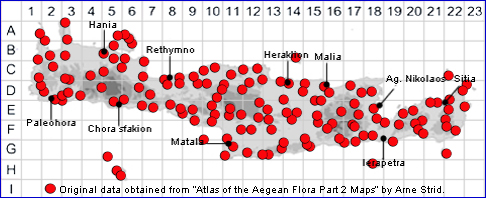
SPECIES DESCRIPTION
ALLIUM RUBROVITTATUM
Family and Genus:- See- ALLIACEAE/Sect. ALLIUM
Common Names:- None
Homotypic Synonyms:- Allium rubrovittatum var. gracillimum
Meaning:- Allium (L) The ancient Latin name for garlic.
Rubrovittatum (L) With longitudinal reddish stripes.
Bulbs:-
1) 0·5-1 cm diam. narrowly ovoid.
2) Outer tunics leathery.
Stems:-
1) 2·5-20 cm. slightly ribbed.
Leaves:-
1) 3-4, 25-150 x 2-5 mm. filiform, sheathing the lower 1/3 of the stem.
Flowers:-
1) Spathe, 2-valved, up to 0·5 cm. shortly beaked, persistent.
2) Umbel, 0·8-2 cm diam. hemispherical or broadly ovoid, dense, 5 to 30-flowered.
3) Pedicels, 1-6(-12) mm, unequal.
4) Perianth, campanulate.
5) Perianth segments, 3·5-4 x 1·5 mm. narrowly ovate, obtuse or subacute.
strongly papillose. reddish, with a broad white margin.
6) Stamens, finally just exserted.
a) outer 3 filaments 3-4 mm, simple.
b) inner 3 with the basal lamina 3 times as long as the central cusp.
c) lateral cusps about twice as long as the central cusp.
7) Anthers usually dark purple, but sometimes yellow.
Fruit:-
1) Capsule, c. 3 mm.
Key features:-
1) Filaments 3 mm, included.
2) Perianth segments, with a broad white margin.
3) Umbel, 0·8-2 cm diam.
4) Stems, 2·5-20 cm. slightly ribbed.
Habitat:- Rocky places and dry, open, stony ground from sea level up to 2000 m
Distribution:- Endemic Crete, Karpathos, Antikythera, but has also been recorded
from Cyprus. Widespread in Crete.
Flowering time:- Apr-May.
Photos by:- Fotis Samaritakis
